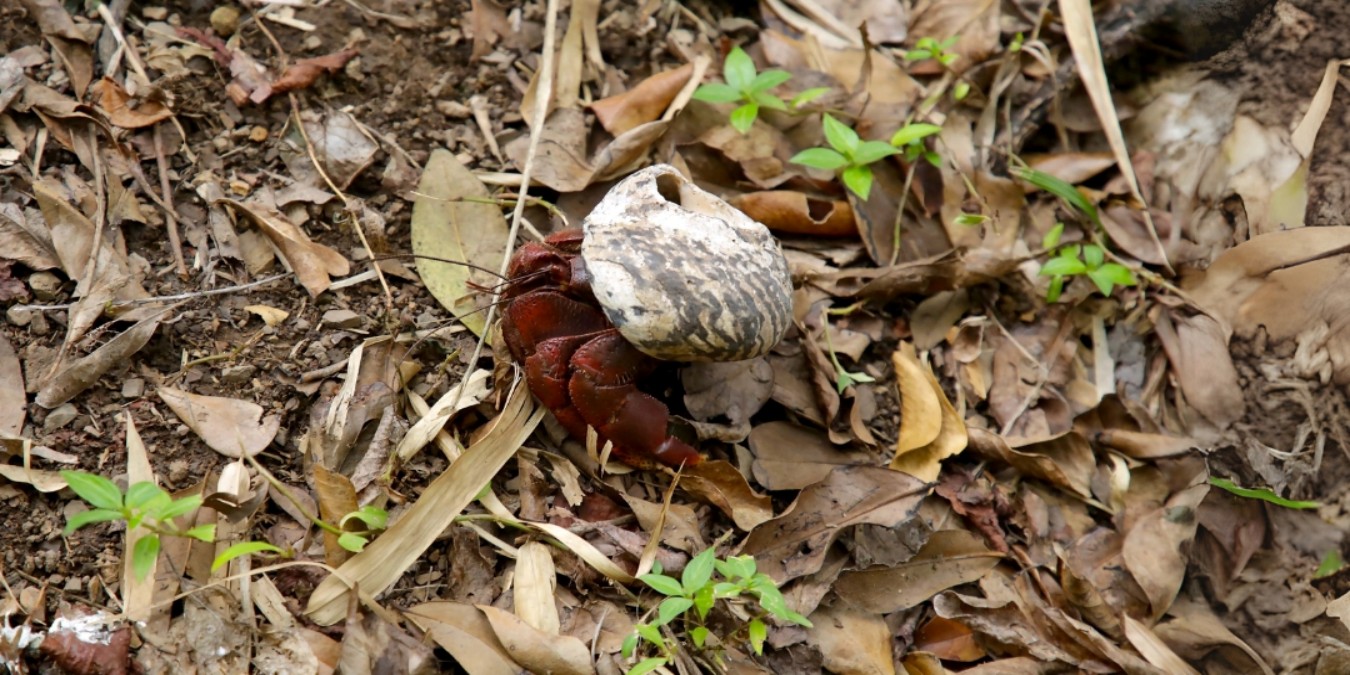Hermit Crab Locally known as the Soldier Crab or Purple Pincher, the Caribbean Hermit Crab (Coenobita clypeatus) is one of the most fascinating land crabs found throughout the islands of Trinidad and Tobago.
Unlike true crabs, hermit crabs cannot produce their own shells. Instead, they occupy empty seashells for protection and exchange them as they grow, an ingenious adaptation that makes them highly resourceful survivors. Their most recognizable feature is the large purple claw, used both for defence and for carrying food.
These crabs are primarily nocturnal and play an important ecological role as scavengers, feeding on fruits, leaves, and decomposing matter. They are also surprisingly mobile, often climbing trees and venturing inland far from the shoreline. During the rainy season, females migrate toward the sea to release their eggs, ensuring the continuation of their life cycle within the coastal ecosystem.
Where to find them in Tobago
Soldier crabs can be spotted in many parts of the island, particularly along sandy beaches, mangrove edges, and coastal forests. They are common in areas such as Pigeon Point, Buccoo, Mt. Irvine, and Charlotteville, where they can often be seen scuttling across paths at dusk or after rain.
In Trinidad and Tobago, soldier crabs are more than just a biological curiosity; they form part of local culture and memory, from children collecting them along sandy trails to their role in playful crab races. With lifespans that may extend decades in the wild, the Caribbean Hermit Crab stands as a resilient and enduring symbol of adaptability in our island environment.


Comments